The PlayStation Vita has come a long way in the last two and a half years. Sony’s handheld console has navigated a winding and sometimes uncertain route, often deviating from whatever we thought its original course would be. And yet somehow, these many months later, it has landed in a pretty good place.
When Sony released the Vita in February of 2012, we were excited, but cautious. We recommended it to some people, but not to others. Stephen wrote our official review before we had moved to our current “Yes/No/Not Yet” system for console reviews, but had we been using that system, the Vita would most certainly have gotten a “Not Yet.”
Today, I’m going to be revisiting Sony’s ambitious handheld. How does the Vita hold up, just a hair under two and a half years after it came out? Let’s find out.
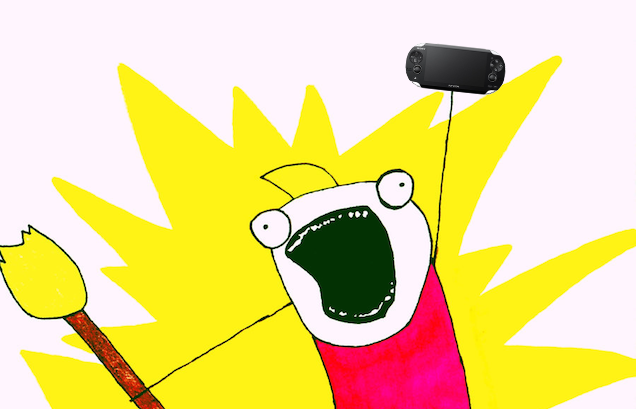
Good At One Thing, Not All The Things
In 2012, Sony seemed to want the Vita to be everything. It would be your dedicated gaming device but also your pocket organiser, your maps application, your email client. It would let you Tweet and keep your calendar. It would be an iPad and a PSP rolled into one. There was even an option to get a 3G Vita with a data plan, so that you could use apps and (theoretically) play online games on the go.
The Vita of 2014 is a much more focused device. Its non-gaming apps are mostly vestigial balloons floating on the lower sub-basements of the operating system, only half-remembered when we scan through them looking for the “settings” button.
It’s not really a surprising development, given that as Stephen noted in his initial review, it never really did all that other stuff all that well. While there are still a few of the faithful who use every part of the Vita buffalo, my educated guess is that the majority of users simply use their Vitas to play games.
That’s OK though. The Vita is really good for that.
A Lovely Object, In An Odd Sort Of Way
The PlayStation Vita is a lovely device. It’s also an odd device. Both of those things have been true since day one: The big screen, the well-balanced feel, the pop of the face buttons, those odd shoulder triggers that you eventually got used to.
These months and years later, some of the more experimental aspects of the Vita are more obviously questionable. The front touchscreen is a clear winner, but the rear-touch pad has never felt particularly comfortable to use and is too prone to accidental input. It is more unfortunate than ever that the thumbsticks cannot be clicked, and that a handheld could come so close to mirroring the inputs on a Dualshock controller only to leave off L1/R1 equivalents.
All of that leaves the Vita in a bit of an odd place. It’s a well-made, shiny device that’s missing a couple of features that it really needs. It’s unusual, and in several small ways requires games to be designed for it, rather than matching a console controller 1:1.
In the end, that means that the Vita is better suited for some games than for others. The good news is, there are a lot of good games that are well-suited to the Vita. (More on that in a bit.) The bad news is, it will never quite be able to match the feel of playing a console game like Borderlands 2 or God of War.
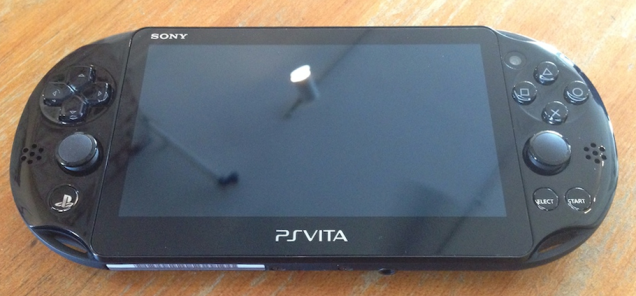
The New Model’s A Modest Improvement
The Vita got a hardware update a couple of months ago with the release of the ligher, cheaper Vita Slim. I reviewed the Slim back in May, and had this to say:
The Vita Slim improves on the original Vita in several small ways — buttons, plugs, included memory, ease of use, lighter weight. It also brings one notable downgrade — the less brilliant screen. What once was a Vita remains a Vita, though now it will be a bit easier to carry around.
That about sums it up. The new Vita is lighter, easier to hold, and cheaper, but the new screen is less brilliant than the OLED on the original. All in all it’s a modest improvement, which is fine, given that the original device was a pretty nice piece of gear. Though it was hard not to be a little bit disappointed in the continuing lack of the aforementioned clickable thumbsticks and L1/R1 buttons.
Not An Essential PS4 Peripheral
At various points in its lifespan, Sony suggested that the Vita would eventually be able to effortlessly stream PS3 and PS4 games from anywhere in your home or abroad, letting you pick up a PS4 game mid-pause and carry on from down at the cafe, or from the library at school.
To relive those days of heady promise, watch this 2013 “A Day with PlayStation” trailer from the 1:05 mark:
That would have been pretty freakin cool, huh?
But while the reality of the Vita’s remote play function can be cool enough, it’s safe to say that the reality falls pretty short of the ambitions put forth by that video.
It’s to Sony’s credit that they have made PS4 game natively support remote play, but the feature works best if you enable a direct connect to your PS4 and stay close to the console. It gets less responsive as you move around your house and connect to your PS4 through your home network, and in our experience becomes basically unplayable should you attempt to jack in from a remote network across town.
The Vita’s odd design doesn’t do it any favours with remote play, either. While some games don’t require clickable thumbsticks and two extra shoulder buttons to work properly, most do, and the Vita’s workaround of having players tap the back or front touchscreens feels like exactly that — a workaround.
All in all remote play is a neat idea that doesn’t really deliver as promised, and judging by the nature of the technical bottlenecks it’s hitting, probably never will. It’s a nifty way to turn your PS4 into a quasi-Wii U, playing games on the couch while someone else watches the TV. But the dream of go-anywhere, play-anytime remains just that: a dream.
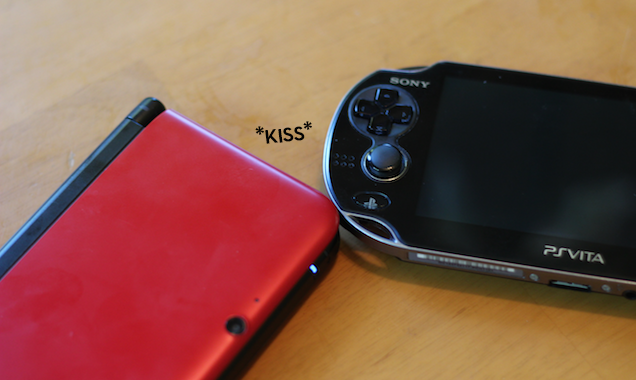
My Enemy, My Friend
One thing about the Vita that’s surprised me is how well it complements its competition, the Nintendo 3DS. When Nintendo released the 3DS XL, the screen-size gulf between the two handheld systems narrowed significantly. Shortly afterward, in early 2013, the 3DS started on a tear of incredible games, while the Vita was still finding its groove. It seemed as though Nintendo was about to eat Sony’s lunch.
These days, however, the two handhelds practically work together hand in, uh, hand. There isn’t much overlap between their game libraries, which means that each system has a unique gaming identity. The 3DS has a bunch of great Nintendo games and some interesting third-party exclusives, while the Vita has a ton of indie games that are more fun to play on the go than on a big screen, and a bunch of excellent new and remastered JRPGs.
The 3DS and Vita may be mortal enemies as far as Nintendo and Sony are concerned, but for a gamer who actually owns both of them, they get along like the best of friends.
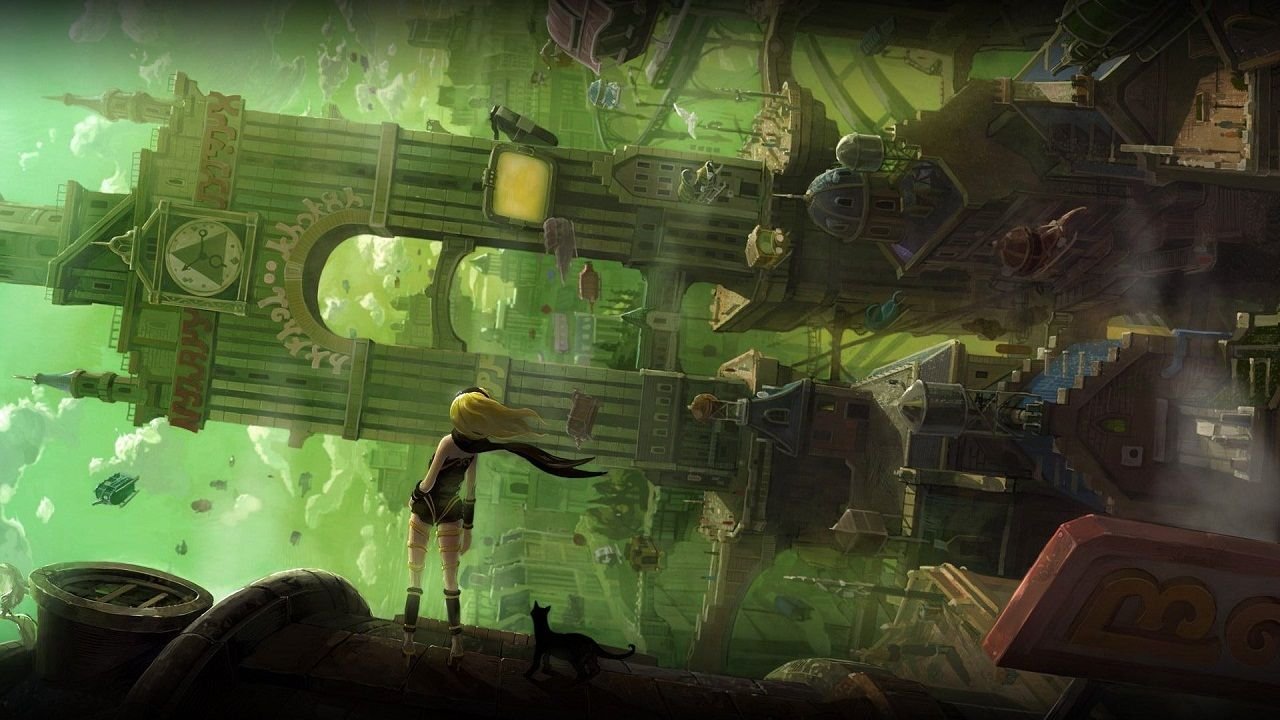
The Games Have Arrived
When the Vita launched, it promised to blur the lines between handheld gaming and set-top console gaming. Sony made a big show out of Wipeout and Uncharted games that looked just like their PS3 equivalents.
Two and a half years later, the actual game library of the Vita is much stranger, more diverse, and more appealing than those early releases suggested. There are a few good Vita games that feel like portable versions of established PS3 and PS4 games, but the best stuff on Vita is much more interesting.
There are good AAA-style action/adventure games, like Gravity Rush and Killzone: Mercenary. There are playful games that employ the Vita’s many cameras and touchscreens in the service of user creativity, like Tearaway and LittleBigPlanet Vita. There are arcade shooters like Super Stardust Delta and Pixeljunk Shooter Ultimate.
There are JRPG reboots and re-releases that outdo their console forbearers, like Final Fantasy X/X-2 and Persona 4 Golden — the latter of which went on to become one of the most unlikely killer apps of all time — along with a raft of less mainstream JRPGs. There are action RPGs like Soul Sacrifice, and there are oddball Japanese visual novels that have won over so many of us at Kotaku, games like Zero Escape: Virtue’s Last Reward and Danganronpa: Trigger Happy Havoc.
The Vita also doubles as a terrific way to discover or rediscover great PSP games, as Sony has made a large number of PSP and PSOne games available on their store. If you wanted to buy a Vita and use it only to play classic JRPGs like Trails in the Sky and Final Fantasy Tactics, you’d have a very good time doing so.
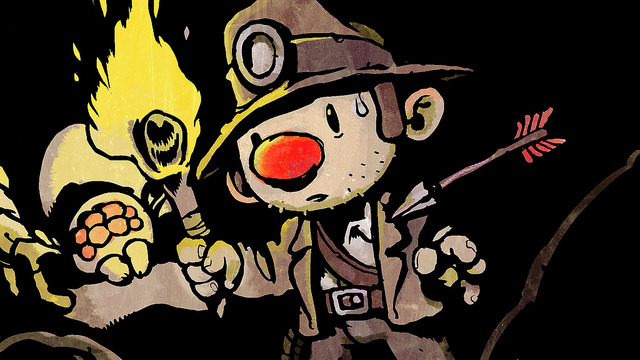
And then there are the indies. So many good independently developed games are now on Vita, most of which are available for other systems, but many of which feel particularly at home on the Vita. Turns out, the platforming masterpiece Spelunky is a perfect fit for the Vita. Ditto Sound Shapes, OlliOlli, Thomas Was Alone, Lone Survivor, Luftrausers, Divekick, Fez, Hotline Miami, and many more.
Sony is making more and more Vita games “cross-buy,” meaning that if you buy them on Vita you also get a copy on PS4 and PS3. With some games, it’s even possible to have your saved data sync between devices, meaning that, in a way, the Vita is finally able to live up to its promise of allowing you to take your console games on the go with you. And as with their other consoles, if you sign up for Sony’s PlayStation Plus service, you’ll get a bunch of great Vita games for free, with more added each month.
The long and short of it: Over the past two and a half years, Sony has managed to cobble together a diverse and interesting collection of games for the Vita. FPSes, platformers, RPGs, shoot ’em ups, dating sims, visual novels, art games and so much more — there really is something for just about everyone.
In Conclusion
When it comes time to recommend a game console, it almost always comes down to games. Are there enough of them? Are they good enough? At this point, the Vita answers both of those questions with a resounding affirmative.
The Vita hasn’t become the system it set out to be in 2012. Instead, it’s become something a bit odder, and arguably more interesting. While there are plenty of ways that the Vita could be improved, at this point Sony has done enough to make the Vita much easier to recommend.
There remains an elephant in the room, however: The fact that Sony has slowed down in announcing new games made specifically for the Vita, opting instead to port over PS3 and PS4 games and re-release other games that can be played elsewhere. Are we recommending something that is in the process of being abandoned by the people who created it? Possibly. Does it matter? Not really, because the Vita’s future, unclear as it is, is irrelevant given how strong the Vita’s present is.
The Vita’s got more than enough good games to make up for any unfulfilled promises or unmet potential, and it’s more affordable than ever. In 2014, should you get a PlayStation Vita?
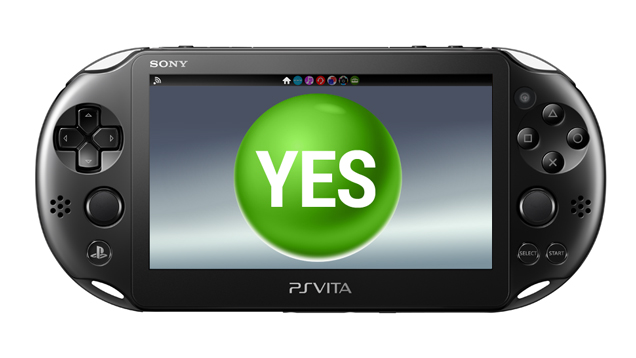

Comments
37 responses to “PlayStation Vita Review Update: Two And A Half Years Later”
I bought one just yesterday, I returned it to EB today. The control sticks are horrible, the UI is pretty ordinary but the remote play is pretty cool, at least I thought so until I tried to play Battlefield 4.
note: is worth it for Persona 4: Golden but not much else.
So you bought one yesterday, sampled the entire games library in order to conclude that P4G is the only worthwhile game and then returned it today? Impressive.
I think he may be a speedrunner
I would love to see their P4G speedrun seeing as they completed it and every other game available for the Vita (including all PSP and PS1 games as well as the multitude of indie games) in less than 24 hours. They should totally run in AGDQ next year.
that’s some pretty swift justice!
Well, you can get analog covers that really help for under $10… And your problem with remote play was playing Battlefield, a horribly glitchy game, even without remoteplay… Why, just why?!
I have a Vita and 3ds, I use them about the same. The Vita is the better machine but has worse ports. If you returned it after 1 day you must have gone into it really hoping to hate it, or you are just trolling… Thats my 2c.
The cross-buy ecosystem and Spelunky make it a must-buy for me. Very glad that I grabbed one last year.
I love it, but i wouldnt recommend it to everyone. It suits a very niche market.
as someone contemplating the purchase, what sort of “niche” is it?
Do you like psOne, JRPGs and indies? Then your in the niche that will like it
That’s what I’m struggling with. I’m looking at the store and there’s indies, ‘indies’ where that means half-baked junk you’d get on an iPhone, JRPGs and portable versions of major console games that look like under powered ports, and it all sort of blurs together.
I don’t have that familiarity with the library/names to tell which games are my sorts of games and which aren’t, and that makes it really difficult for me to browse. It doesn’t help that I have a very polarised reaction to Japanese games. I love them or hate them and it’s hard to tell until I actually start digging in.
I don’t normally buy platforms for killer apps but I need a game to push me over the edge. If there was a Mega Man Legends 1+2 collection in English on it I’d buy one in a heartbeat and from there I’m confident that I’d find my way around to the rest of the games. Metal Gear Solid HD Collection almost does it but I want that on a console not a handheld.
I’ve had a Vita for about a year and a 3DSXL for half as long.
For me, the Vita is about having a large amount of decent games, but none that really stand out. It’s the machine I grab when I want to just zone out and not get sucked in. I’d say, if you have PS+ jump in. Otherwise, there isn’t really all that much that makes someone ‘neeeeeed’ a Vita over anything else.
Actually, Metal Gear Solid HD Collection is awesome on the Vita.
it seems to scratch certain itches, but I find it hard to recommend to everyone of people cos its so polarising. As other ppl have said its great for alot of indies and jrpgs, of which there are heaps. Not as hot for FPS games, but that isn’t to say they’re bad. I have both Killzone: Merc and Borderlands 2, and they’re both decent, but I guess a more hardcore FPS lover would likely disagree.
For me, I love it because I commute, and when I’m at home I’m just too busy to sit down and play my consoles, so I love the fact that there are a lot of ports of PS3 games and such that I can play during my trip to and from work, and most of them play really well. Of course, if you play them against their console counterparts then the vita version will probably be 90% of the time inferior. So i wouldn’t recommend getting the ports if you’re just gonna play with your vita at home, I guess.
That’s what kept me off the PSP. Maybe it was just the way they promoted it, but it felt like a console substitute rather than a handheld I would choose to play even if I had other options.
In my experience… If you are looking to buy only 1 hand held I would recommend a 3DS.
If you are looking for a device that compliments your lifestyle and other consoles/ acts as an extension of play but not so much as a stand alone platform/ if you really love indies/ classic games… Then the Vita is for you. If you just want a portable console to play games on the go… The 3DS is better IMHO.
Wow… To be honest i would not be recommending it to the majority of people (minus the absolute hardcore of sony fanboys/gamers for the exclusives). When Sony spends only 3-4 seconds in their press conference on the Vita while spending over 10 minutes talking about some TV show “Powers”, i think that is enough to show that this thing is dying just a tad slower death then the first PSP.
I would say that yes, the library of games is good but i can’t point to any of them and go to someone picking up the vita for the first time – you NEED to pick this up. Sure Gravity Rush was good, so was Uncharted but i can’t really think of much else that i would say to someone – this is what sells the vita.
At around $200 i couldn’t recommend someone buy one now over a 3ds XL which has been going at the insane price of $99 or the 2DS at $148. Mine has been a draw, just like my old PSP was for very prolonged periods of time (think it has been over 8 months since i even saw it) while my 3DS is still in my bag, getting some play time every couple of days or so (i would do that with the vita but battery life is almost non-existant).
I’m as far from a Sony fanboy as you can get (I can’t remember the last time I played my PS3) and I find that I’m using my Vita far more than my 3DS. This is a surprise to me. But as the review states, a large part of that is the indie support. I’ve bought about 20 games for maybe $50 all up that are all top-notch.
I think Serrels described it as the PC portable a few weeks ago. I think that’s the perfect way to describe the niche it fills for me. I haven’t played very far into Uncharted (despite loving the PS3 ones), but I’m playing the crap out of Spelunky, Hotline Miami, Stealth Inc, Olli Olli, Retro City Rampage…
I think that is great that you are getting some good use out of it… however i also own most of those titles – just on my PC or 360. A PC portable is a good description but at the same time, it just doesn’t fill that hole for me – if i want to play those games i am happy to play them on my laptop/PC. Plus with the battery life the way it is now on my own one – i am not inclined to play it anywhere except next to my wall, which means – why play it uncomfortably next to a power outlet when i can play on my PC?
I bought the Vita when they were promising unique, exclusive “AAA” games to the platform and that is what intrigued me to purchase. Two years later with Sony treating the vita like the youngest neglected child, i am bitterly disappointed (especially after being somewhat disappointed with my PSP purchase) and if Sony was to come out with a literal portable PS4 that can receive ports straight from the PS4 i would not go anywhere near it.
$99 for a 3dsxl? is that a typo or have i missed something?
Kmart providing the Ninty smackdown deals once again (although at certain stores by the looks of it): https://www.ozbargain.com.au/node/151143
EDIT: Wow it is now coming up as expired – i bought one here in WA just less then 2 hours ago.. i would still ring up and try your luck.
[citation needed]
https://www.ozbargain.com.au/node/151143
iiiiiinteresting. Looks like I’m going to swing by my local K-Mart on the way home from work!
Good luck! 😀
Amen to that
And anyone who says Borderlands 2 on the Vita is shit has obviously never played it. Sure, it can have a dicey framerate (especially in Sanctuary) and long load times but god-damn its a fun game – and just as fun on the Vita as it is on the big consoles
I do like delayed reviews, gives a good view after it has been used for a while, as i’ve bought alot of devices which turned out to be pure crap after 4-5 weeks of regular use such as my headphones, razer mamba 4g, chair etc…
but it has made me more cautious for buying new tech in the future
Use mine everyday. Vita has turned into the niche exclusionary jrpg haven I was hoping it would end up being. PSP legacy continues. Good work Sony!
I’m right on the edge. Cross-buy is making this more and more appealing to me, but I think a big part of that is how badly I want Nintendo to copy the concept for Virtual Console titles.
Add in the amazing value if you are a PS+ member!
I have literally hundreds of dollars worth of games in the library in just the last 12 months alone. Then there are many, many titles that are great and dirt cheap (LBPvita is awesome…and about $10).
Yeh, it will not be all things to all people but I am glad I purchased mine. It has got a fair work out in the last few months…and yes, the lay out can get some getting used to. i have MASSIVE hands and at the start I found it painful to play, then you find ‘your grip’. You cannot hold it like a control pad, but once you work out how it fits in your hand you will have no issues.
Launch Day buyer here and whilst the first year or so for me was quiet (relative to now), since having kids it’s my primary gaming device to and from work.
I don’t find that I get cramps, the battery lasts enough for me day to day and everything is simple enough to use.
I’m still amazed by the attach rate the device has, could be easily be between 20-30 games.
Looking forward to the Ratchet Trilogy that should be out next week, plus future releases of Danganronpa 2 & Hatsune Miku : Project DIVA f 2nd. Those are the physical copies of games that I know are coming and would last me for the rest of the year… not even touching all the digital stuff.
+1 on Miku. The Vita is amazingly well-suited to rhythm games, lovely clicky face buttons and d-pad. My only complaint is that you can’t run multiple accounts without doing a factory reset and using diffetent memory cards. I’d love to buy a digital version of Monpiece from the EU or buy some DLC for Project Diva 2nd from JP but no dice. If only it were as easy as it is on PS3.
One year on for me and I Love it. wont lie i spend same amount of time playing PSOne games as I do Vita games on it
PS+ makes it Amazing.
Love the little black box and all I can say is
PS4 on the toilet!!! Life is GREAT!!!!!!
Over the last 6 months it’s become my main console, though mainly due to circumstance. I’m got 2 young kids and not a lot of free time so the instant resume function is my fav feature, makes 20 minute play sessions a reality. I bring it to work and squeeze half an hour in on my lunch break.
I hardly buy any games either as the selection with PS+ is pretty good and got me playing some games I never would have tried otherwise (Muramasa Rebirth for example, it’s great and I’m hooked).
Best games for me have been the last 2 Rayman games, they are perfect for the Vita.
Games to avoid, Need for Speed. Amazing technical achievement but the draw distance is so bad it made it unplayable for me (I’d love a port of Takedown though!)
Enjoyed it for the two weeks I went on holiday a while back, when I was away from my PC and consoles. Finished AC:Lib, Gravity Rush and Uncharated in that time. Now it gathers dust, getting turned on once or twice a month to check which games are on PS+.
The IGN Beyond boys put it beautifully –
Those who don’t have a Vita say that it doesn’t have any games.
Those who do have a Vita say they need a bigger memory card.
Exactly. I have a 32Gb card and I’ve had to shuffle games between my Vita and PS3 many times.